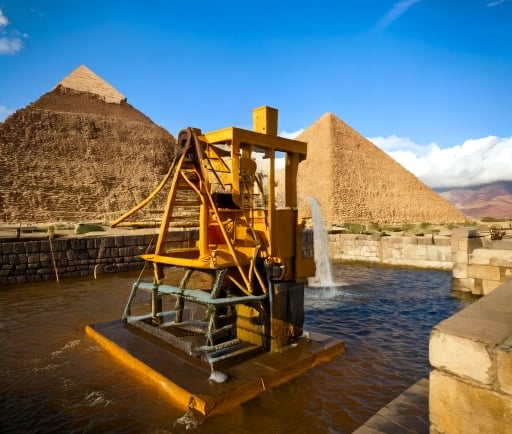The Ingenious Engineering of the Step Pyramid of Djoser


The History of the Step Pyramid of Djoser
The Step Pyramid of Djoser, constructed during the Third Dynasty of the Old Kingdom of Egypt, is widely regarded as a monumental achievement in ancient engineering. Designed by the architect Imhotep, this pyramid marks a significant transition in the evolution of burial tombs, from simple mastabas to grand pyramids. The Step Pyramid, located in Saqqara, served as a prototype for future pyramidal structures, showcasing the ingenuity and creativity of ancient Egyptian architects.
The Hydraulic Lift Mechanism
One of the most fascinating aspects of the Step Pyramid of Djoser is its innovative use of a hydraulic lift system that played a crucial role in its construction. A body of water was directed into carefully designed shafts within the pyramid. As the water rose, the force generated from its ascent was harnessed to assist in transporting building stones. This remarkable technique allowed workers to manage the heavy weights associated with large stone blocks, significantly impacting the efficiency of the construction process.
Impacts and Legacy of the Step Pyramid
The architectural strategies employed in the Step Pyramid of Djoser not only revolutionized Egyptian construction methods but also left an indelible mark on world architecture. The incorporation of the hydraulic lift mechanism illustrated a deep understanding of hydraulic engineering principles among the ancient Egyptians. Moreover, this pioneering effort paved the way for the grand pyramids at Giza, which would follow in subsequent dynasties. Today, the Step Pyramid stands not only as a burial site for Pharaoh Djoser but also as a testament to human innovation and the quest for immortality.
